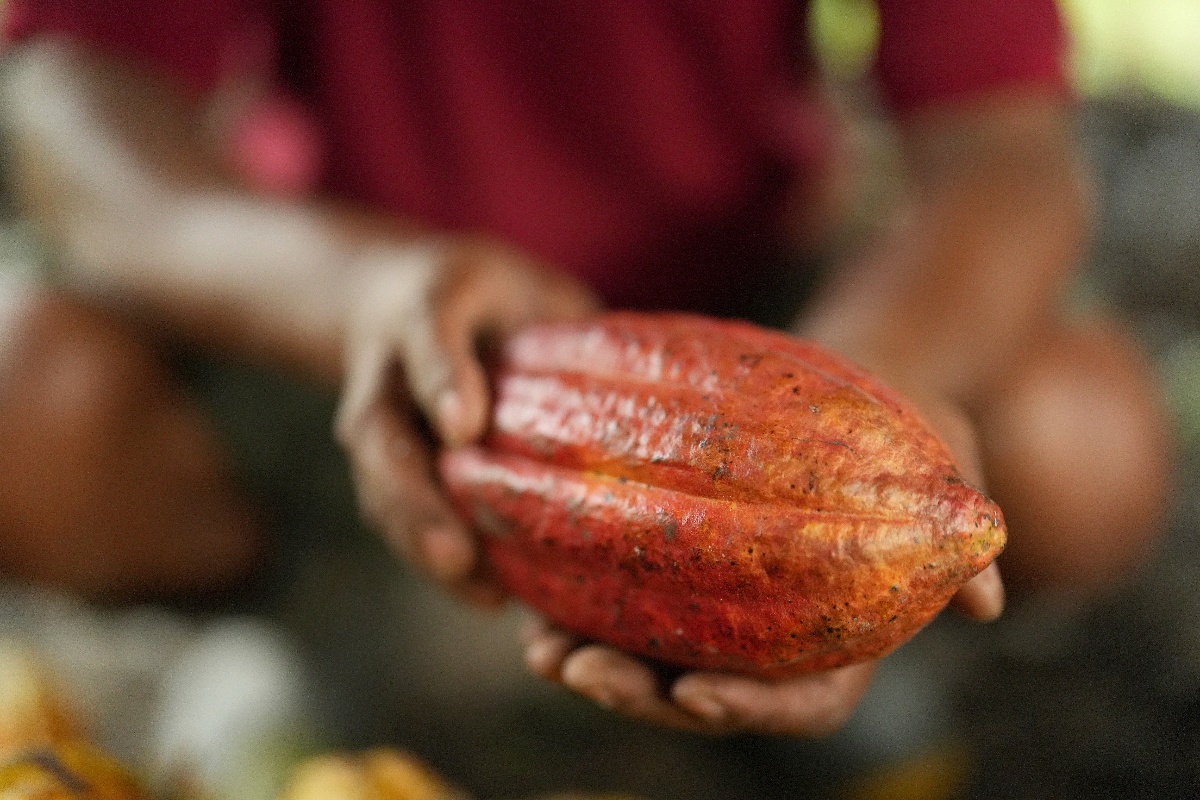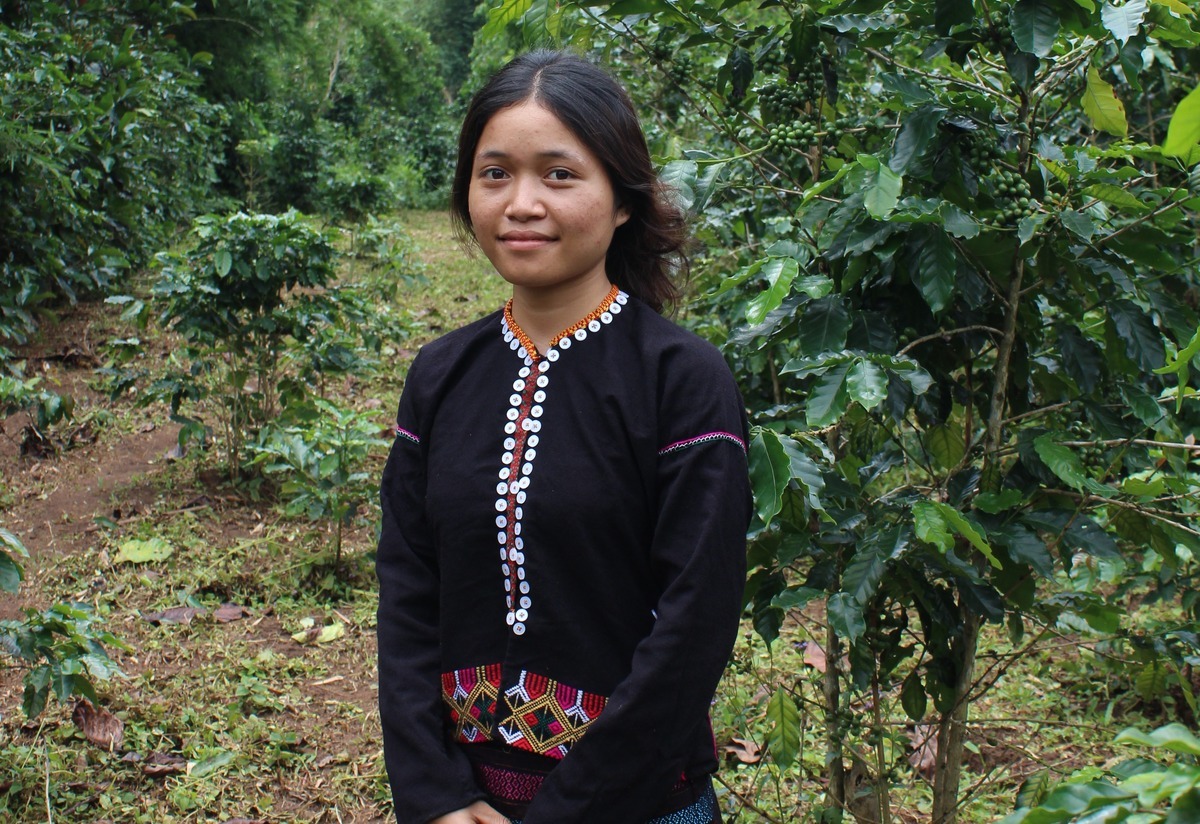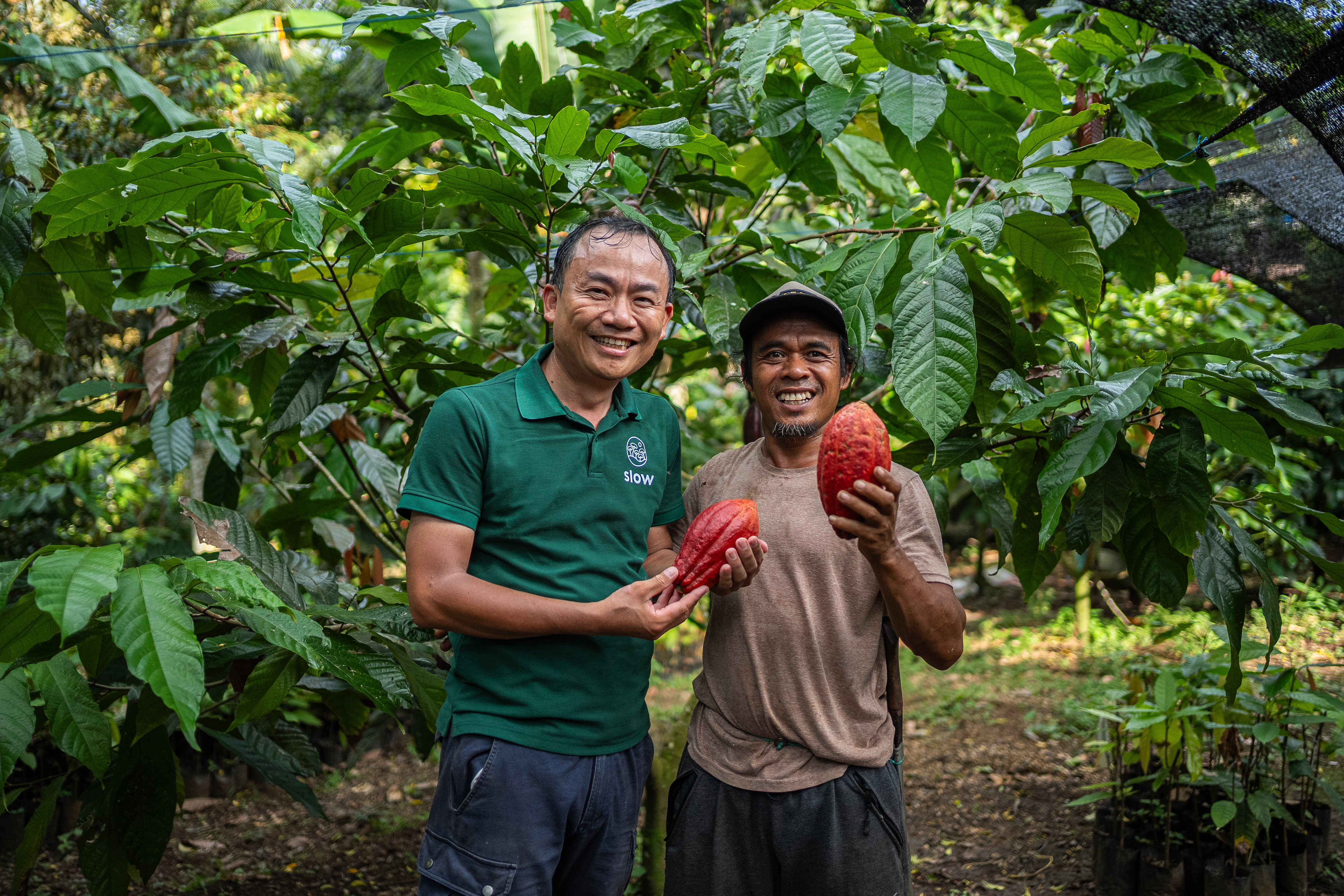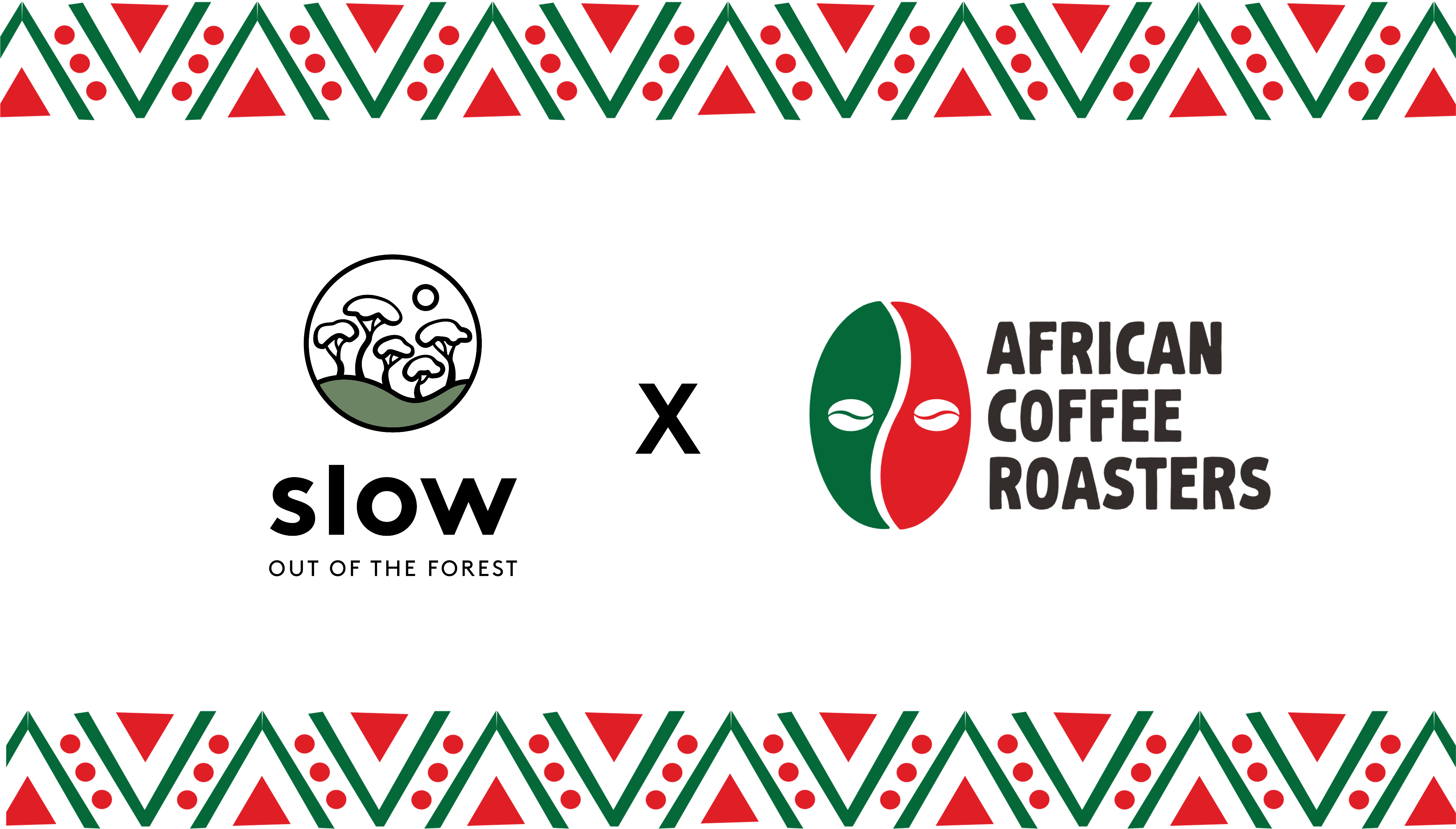What happens when coffee meets a forest?
Climate pressures are rising. In one Vietnamese coffee region, farmers are turning to agroforestry to secure yields, restore soils, and keep supply...

Cocoa is the key raw ingredient to make chocolate © Slow
Sabrina's here to spill the beans on the 10-step process that transforms cocoa beans into delicious Slow Chocolate bars.
See, at Slow, we care about the whole story. “We call it 'farmer-to-bar,’” Sabrina explains, “because our commitment goes way beyond the cocoa bean itself. We care about the entire journey, and it all started with supporting amazing farmers who share our values of sustainability."
The very first step is training. Sabrina says it best: "We figure out what each farmer already knows, and then fill in the gaps." Maybe it's how to fight off pests, maybe it's how to ferment the beans just right. This way, every farmer has the knowledge to grow great cocoa sustainably, which is exactly what Slow Chocolate is all about.

The second step in our cocoa journey is the harvesting process, which is pretty hands-on. Unlike coffee, harvesting cocoa beans cannot be done with machines. Farmers head out and carefully pick the cocoa pods from trees. When they break open the pods,they find the beans covered in a white, sticky pulp that, as Sabrina puts it, looks like a "giant white caterpillars." This is where the magic starts, as these beans are now ready for fermentation.


Two farmers showcase their harvest of cacao pods in Indonesia's Sulawesi © Slow
"After extracting the beans from the cocoa pods, we remove the outer placenta and compost it. The beans then ferment in large wooden boxes. In Southeast Asia, they use hardwood boxes to retain heat without adding any odor to the cocoa.
Sabrina explained, 'During fermentation, first, there's an anaerobic step with alcohol and lactic acid. After a few days, we mix the beans to introduce oxygen, starting the aerobic process that produces acetic acid and other compounds.'
Sabrina emphasized, 'Fermentation is crucial for developing cocoa's flavor.' Interestingly, in Indonesia, 80 to 90% of cocoa skips this step, resulting in beans with less flavor and aroma."

After fermentation, drying the cocoa beans is crucial, much like with coffee. Sabrina emphasizes, "Using an artificial dryer speeds up the process, but we prefer sun drying in solar houses." This method allows for gradual drying under natural sunlight, which helps avoid smoke contamination and allows volatile acids to escape slowly.
"Drying can take up to 7 days in good weather," Sabrina explains, "but in places like Sulawesi, Indonesia, heavy rains can stretch this to two weeks."
This extended drying time not only affects labor costs but also increases the risk of mold development. "Mold is one of the worst things that can happen during fermentation and drying," Sabrina warns. "Once mold sets in, it's nearly impossible to remove the smell, which can carry through to the chocolate-making process and affect the final product."
"Once the beans reach about 7% moisture content," Sabrina notes, "they're ready for storage. This level ensures they're not too brittle and can be stored effectively for a long time."

Sorting is crucial for removing defective beans. Sabrina explains, "It happens in two stages: first at the farm, where farmers pre-sort to remove black beans and contaminants before sending them to us. Then, in the factory during blending, where we combine batches from different farmers or locations and conduct another sorting to ensure quality consistency."


Slow's Chocolate Advent Calendar © Slow
During roasting, the beans undergo the Maillard reaction, which is a chemical process between amino acids and sugars. This reaction enhances the flavors and aromas that define our chocolate.

Winnowing breaks the cocoa beans into small pieces known as nibs, separating them from the shells in the process.

The nibs are ground into a paste called cocoa liquor and mixed with other ingredients. "The resulting product is essentially chocolate," Sabrina emphasizes. "With cocoa nibs, sugar, and other ingredients combined, the grinder transforms them into chocolate over two days."
"Regardless of the machine or grinding time," Sabrina concludes, "the goal remains consistent: achieving small particle sizes and uniform mixing to create high-quality chocolate. Different chocolate makers employ various setups and equipment to achieve this."

Once chocolate comes out of the grinder, we need to temper it. "In chocolate, there are basically two types," Sabrina explains. "You have couverture chocolate, which is considered real chocolate and contains cocoa butter. Then there's compound chocolate, often made with palm oil or other cocoa butter substitutes, which is cheaper because cocoa butter is the most expensive ingredient in chocolate manufacturing."
"Tempering is necessary for real chocolate made from cocoa butter," Sabrina continues. "Tempering ensures the chocolate can be molded correctly by forming the right type of cocoa butter crystals, specifically beta 5 crystals. These crystals give the chocolate a smooth, glossy appearance and a satisfying snap when broken."

Once solidified, our bars are moved from their moulds and hand-wrapped in our distinctive packaging.


Climate pressures are rising. In one Vietnamese coffee region, farmers are turning to agroforestry to secure yields, restore soils, and keep supply...

Earth Day reminds us that change doesn't have to wait for sweeping policy or perfect systems. Often, it starts with something as simple—and as...

Big news from Slow. African Coffee Roasters is now part of the Slow family. And this isn’t just an acquisition—it’s a major step forward in how...